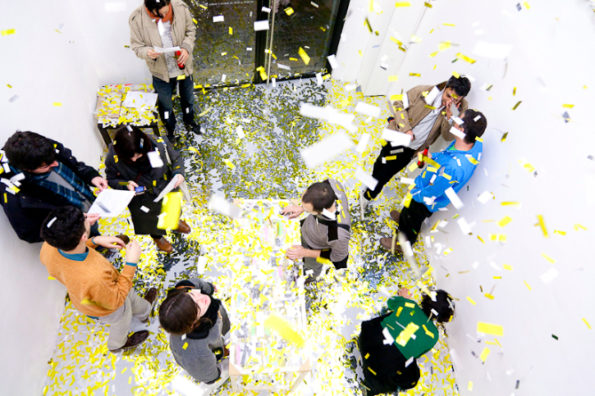Search
To search for an exact match, type the word or phrase you want in quotation marks.
A*DESK has been offering since 2002 contents about criticism and contemporary art. A*DESK has become consolidated thanks to all those who have believed in the project, all those who have followed us, debating, participating and collaborating. Many people have collaborated with A*DESK, and continue to do so. Their efforts, knowledge and belief in the project are what make it grow internationally. At A*DESK we have also generated work for over one hundred professionals in culture, from small collaborations with reviews and classes, to more prolonged and intense collaborations.
At A*DESK we believe in the need for free and universal access to culture and knowledge. We want to carry on being independent, remaining open to more ideas and opinions. If you believe in A*DESK, we need your backing to be able to continue. You can now participate in the project by supporting it. You can choose how much you want to contribute to the project.
You can decide how much you want to bring to the project.

Let’s be honest, anything that questions the established order produces pleasure. Therefore, the exhibition by Jordi Ferreiro at Homession, “Un intento de hacer perceptible lo imperceptible” (an attempt to make the imperceptible perceptible), more than an artistic event, is a liberation from monotony. Academicism and institutions endeavour to squeeze by all means anything alternative into their prefabricated moulds. But artistic creativity knows how to look for spaces where it can calmly make itself manifest. Homesession, an atypical, non-commercial, cultural space, is the place chosen by Ferreiro to carry out his redefinition of the exhibition space.
The main point of departure of the installation revolves around diverse currents of thinking that seek to reconsider the exhibition space, arising from art history, institutional critique and education. These theories call for a museum far removed from the strict protocols regarding space, freed from the established codes that maintain a physical and emotional distance between the public and the object. To resolve this abyss, Ferreiro explores the euphoria that playing can provoke. During the 4 hours of the opening, a canon indiscriminately bombarded the entire Homesession space with 30 kilos of golden confetti. The confetti, apart from falling on top of the spectators and inundating the entire space, fell on top of a table, in the form of a vitrine, something fairly typical in a traditional museum, where Ferreiro shows cuttings from books about museography. One had to look for the information, clearing the top of the table and casting aside the traditional role of the simple observer.
Just like Frank Oppenheimer, Jordi Ferreiro is convinced that the museum can be a place for playing, for agreeable interactive experiences for the public. The white cube has converted the spectator into a passive being, one who feels threatened by the mere mention of any interaction and somewhat frustrated in front of installations. In fact, the very logic of the museum is closer to the norms of conduct than to the spirit of creativity that ought to emanate from the works that it houses. However, not all museums are the same. Oppenheimer’s formulation of the Exploratorium in San Francisco supposed an authentic revolution in museography. The impact of his conception can be traced through to the present day in museums like Cosmocaixa. The central premise is resumed in “making the imperceptible perceptible”, the phrase that provides the title for the installation and which transmits the desire to discover an innovative way of communicating scientific knowledge. Oppenheimer gathers the empirical essence of science and synthesises it into panels with a minimum of information that succinctly reflect abstract concepts. What is more he converts the experience into something interactive with machines and games that accompany the visitors in their search for new knowledge.
With a bit of creativity, Jordi Ferreiro has managed to extrapolate these theories and transform an empty white cube into an entertaining environment. Shortly after the opening began, the very last corner of the space was invaded by metallic paper, and little by little the spectators, previously passive and somewhat apprehensive, began to let their hair down. Around 9 o’clock in the evening, almost two hours later, the ambience was one of pure collective euphoria. The visitors were entranced and some had even cast social conventions aside, sitting on the floor playing like kids under the incessant rain of confetti.
As testimony to what happened during the opening, the Homesession space will remain intact, for the month that the exhibition lasts, with confetti stuck to the cornices of the walls and covering the floor. Aside from being essential in order to understand the concept hidden behind the metallic glitter of the paper, the very fact that Homesession agrees to maintain its space inoperable says a lot about their commitment to art. Thank goodness places like this still exist.

Verónica Escobar Monsalve is a restless soul, with a digital nature and an analogue heart. Her investigations centre on art and culture that mix the digital world with pre-digital thought. Art and culture that is capable of reflecting the complexity of today’s world. She believes in the vital importance of a critical spirit and how this can be applied to any facet in life, however difficult it may be.
"A desk is a dangerous place from which to watch the world" (John Le Carré)